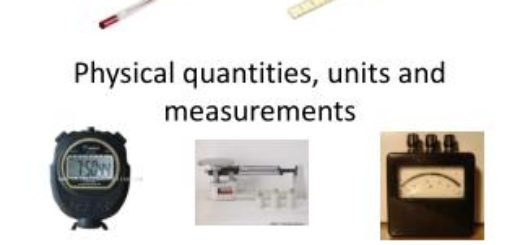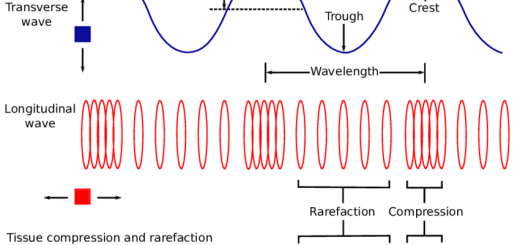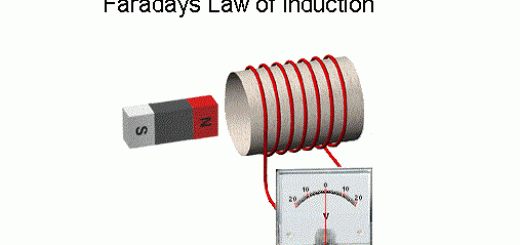Capacitive reactance of capacitors network, AC current and AC voltage in a capacitor circuit
The electric capacitor is made up of two parallel metal plates separated by an insulator and stores the electric energy in the form of an electric field, The capacitive reactance does not cause energy loss because the capacitor stores the electric energy in the form of an electric field.
Connecting the capacitor to a DC source
When a capacitor is connected to a battery where plate (A) is connected to the positive pole and plate (B) is connected to the negative pole then:
The negative charge (free electrons) passes from the negative pole to plate (B), lowering its potential, This negative charge on plate (B) pushes the negative free charges in plate (A) towards the positive pole of the battery charging the plate (A) with a positive charge and raising its potential creating a potential difference between the two plates.
Thus the potential difference between the plates increases as time passes till it becomes the same as the potential difference between the poles of the battery which stops the flow of charges and the capacitor is said to be charged.
This means that the momentary current passing in the circuit is maximum at the moment of connection and decreases gradually till it vanishes, meanwhile the capacitor is charged.
The capacitance
When a capacitor is charged one of its plates becomes positively charged and the other negatively charged creating a potential difference (V) between them.
Capacitance is the ratio between the electric charge on one of the two plates of the capacitor to the potential difference between them, The capacitance (C) is determined by the relation: C = Q / V, Where: (Q) is the accumulated electric charge on any of the plates of the capacitor, (V) is the potential difference between its plates.
The capacitance is measured in Farad (F) and it is equivalent to (C/V), Farad is the capacitance of a capacitor charged by a charge of 1 C when the potential difference between its plates becomes 1 V.
When the capacitance of a capacitor = 5 μ F, It means that the ratio between the electric charge on one of the two plates of the capacitor to the potential difference between them = 5 × 10−6 C/V.
Connecting the capacitor to an AC source
In the 1st half cycle
In the 1st quarter: The capacitor is charged till the potential difference between its plates becomes the maximum value which equals the maximum value of the emf of the supply.
In the 2nd quarter: As the emf of the supply drops, the larger voltage across the capacitor allows its discharge to the power supply, As the emf of the supply reaches zero, the capacitor voltage reaches zero too at the end of the first half cycle.
In the 2nd half cycle
In the 3rd quarter: The capacitor is recharged but with opposite polarity till the voltage between its plates reaches the maximum value of the emf of the supply.
In the 4th quarter: It restarts to discharge as the emf of the supply drops till both voltages reach zero at the end of the second half cycle.
This succession of charging and discharging is constantly repeated every cycle, The instantaneous current intensity passing in the circuit can be calculated as follows:
I = ΔQ / Δt , Q = CV
∴ I = C ΔV / Δt
The phase difference between the current and the potential difference
The potential difference varies with the phase angle in the form of a sine curve, ΔV / Δt represents the slope of the tangent drawn to the curve where:
- The slope reaches its peak value when the phase angle equals zero and thus, the current intensity (I) reaches a maximum value.
- The slope decreases gradually as the potential difference increases till it becomes zero when the potential difference reaches its peak value and thus the current intensity becomes zero.
- The slope of the tangent becomes negative when the potential difference decreases and the instantaneous current intensity becomes a negative value.
It obvious that the voltage lags the current by a phase angle of 90° or a quarter a cycle due to the capacitance of the capacitor.
The capacitive reactance (Xc) is the opposition to the flow of AC current in a capacitor due to its capacitance, The capacitive reactance is measured in Ohm (Ω), The capacitive reactance (Xc) is determined by the relation:
Xc = 1/2πfC
Xc = 1/ωC
Where: (C) capacitance, (f) current frequency, (ω) angular velocity, When the capacitive reactance of a capacitor = 10 Ω, It means that the opposition to the flow of AC current in a capacitor due to its capacitance = 10 Ω.
The factors affecting the capacitive reactance of a capacitor
- Current frequency (f ), (inversely proportional).
- Capacitance (C), (inversely proportional).
The electric field intensity passing in a circuit includes a capacitor is determined from the relation:
I = Potential difference across the capacitor (Vc) / The capacitive reactance of the capacitor (Xc)
In high frequencies, the circuit becomes as if closed, because the capacitive reactance becomes very small such that Xc ∝ 1/f thus the electric current intensity increases in the circuit such that I ∝ 1 / Xc.
The capacitive reactance of capacitor network
When connecting many capacitors together then:
If capacitors are connected in series, they will be charged equal charges (Q).
V = V1 + V2 + V3
Q/C = Q/C1 + Q/C2 + Q/C3
1/C = 1/C1 + 1/C2 + 1/C3
If the capacitance for all capacitors are equal and their number (n)
C = C1 / n
If capacitors are connected in parallel, they will have the same voltage (V).
Q = Q1 + Q2 + Q3
VC = VC1 + VC2 + VC3
C = C1 + C2 + C3
If the capacitance for all capacitors are equal and their number (n)
C = n C1
AC circuit contains ohmic resistance, capacitor and inductive coil connected in series (RLC-circuit)



